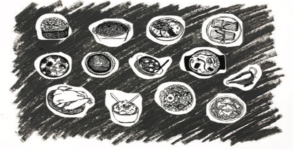The media coverage about the murder of a black, teenage male, Trayvon Martin, by a neighborhood watch volunteer, George Zimmerman, claiming self defense made national headlines with a definite angle of racial profiling. This case is one that brings up issues of media coverage and bias. From their image choices to their inclusion of certain details, news sources are reporting on this issue with obvious opinions about innocence and guilt.
Most of what has been reported is hearsay. It’s hard to figure out who is telling the truth when all quotes are alleged with no other data to back them up. For example, a Fox News article repeatedly quoted Zimmerman’s father. He is only a secondary source because he can only retell that which his son told him happened the night of February 28. That is not enough for substantial journalism.
In what seems like an effort to follow a hot story, our news go-tos have been searching for new material wherever they can find it. We feel like this has been confusing and misleading. We have been overloaded with “facts”, from the mundane detail of the Skittles Martin had bought to the vital description of the black hoodie he wore, and online pictures depicting him taking part in gang culture because he was wearing a gold grill on his teeth.
How much do media images show us about who a person is and how we should judge a person? Does a suspicious person wear a black hoodie? More importantly, does wearing a black hoodie make you a suspicious person? Judging a person based on his or her appearance is both a practical tool and a troubling problem. We need to be safe from dangerous people but avoid outright prejudice.
This debate also echoes conversations about female media images and victim blaming. The argument that women in tight, revealing clothing are asking for rape share similarities with the argument that a black boy wearing a hoodie is asking to be shot because he appears suspicious. The images of black males in the media tend to be the extremes of criminals or heroes and leave out a balanced
middle ground.
The images used to show us Martin and Zimmerman have also been criticized. An article on Yahoo! News, “Trayvon Martin shooting: Debate over photos escalates,” discusses the use of the prominent images of Martin and Zimmerman. Zimmerman’s photo is a mug shot from a previous arrest. His orange shirt also connotes jail jumpsuits. This photo juxtaposed with a young photo of Martin has been accused of manipulating the viewer. This criticism suggests that if Martin’s photo were more recent, he would have appeared more menacing and dangerous which would somehow justify the violence inflicted on him. The use of this image may also suggest that Martin’s image is meant to be that of an innocent victim. Either way, there should not be a “supposed to” in the news.
And there are smear campaigns on both sides. Accusations target Zimmerman as a racist, rogue neighborhood watch volunteer.
On a positive note, there are some media outlets that have taken the news in a different direction. Many local news outlets have shown how this story is relevant to local communities, including Oakland. An article in the San Francisco Chronicle on March 30 entitled “What about Oakland’s Trayvon Martins?” highlighted local “Trayvon Martins”, or young black men who have been killed in violence on the streets, and local support groups for families who have lost their sons. Oakland mothers have found counseling and support through groups such as the Khadafy Washington Foundation for Non-Violence. The question they ask is “Why is their son any different than Trayvon?”
This story has brought about a conversation in America from the major news organizations down to the local communities. We hope this story will take a constructive direction and lead to change, leaving behind smear campaigning and irrelevant reporting.


